Nancy
Forum Replies Created
Viewing 19 posts - 1 through 19 (of 19 total)
-
NancyParticipantThis was a bit easier than I thought it would be.
 in reply to: Drawing What You See – Upside Down Drawing #719831
in reply to: Drawing What You See – Upside Down Drawing #719831 -
NancyParticipant
@Avery Thanks Avery. I was a little surprised at it too. I think the suggestion of the hand really is what makes it stand out. I guess one has been found in eastern Washington so I hope this hornet can be stopped.
in reply to: Getting Comfortable with Watercolor #711868 -
NancyParticipantI have been working with the water colors trying to create depth with just the color, instead of the pencil. I came across this delightful photograph and I just had to draw it and color it.
 in reply to: Filling Your Sketches with Color #704185
in reply to: Filling Your Sketches with Color #704185 -
NancyParticipantAnd another.
 in reply to: Filling Your Sketches with Color #700661
in reply to: Filling Your Sketches with Color #700661 -
NancyParticipantHere is another.
 in reply to: Filling Your Sketches with Color #700660
in reply to: Filling Your Sketches with Color #700660 -
NancyParticipantI finally got brave enough to try color on my drawings, actually copies of my drawings, copies onto watercolor paper. I am not totally pleased with them but here they are and I would like suggestions from any other students.
 in reply to: Filling Your Sketches with Color #700659
in reply to: Filling Your Sketches with Color #700659 -
NancyParticipantHi Leonora, your chieraschuro is very well done and informative. I love the red onion and the pepper, nicely done. The colors are outstanding and the tiny details add so much to making them appear real.in reply to: Illustrating the 3D World #695116
-
NancyParticipantMy first attempt is to use the dry on dry technique, or nearly dry. I did this due to the small areas I was coloring. I used by comparison drawing of the hornets and honey bee and added color to it. I think the Asian hornet and the honey bee came out the best. I found it was difficult to get the brush dry enough not to be runny, but I got the hang of it, I think. I really enjoy working with color.
 in reply to: Getting Comfortable with Watercolor #694825
in reply to: Getting Comfortable with Watercolor #694825 -
NancyParticipantI did my comparison on a dangerous situation involving an invasive species threatening another species brought to the Americas in the 1800s, the honey bee. A single Asian Giant Hornet can decimate a honey bee hive in about 3 hours. If you see one of these hornet contact your state agriculture department.
 in reply to: The Power of Comparison #694119
in reply to: The Power of Comparison #694119 -
NancyParticipantApril 21, 2020 cloudy and rainy I have an observation spot at breakfast each morning. We sit at a large window and look out on our bird feeders which sits about 3 feet from the window. This is to allow my husband, who has low vision to see the birds, it also discourage bird strikes into the window. There are four feeders hanging from a porch swing frame, two tube feeders have a mix of seed, another has only sunflower seed chips, and the third is a 3 suet cake wire feeder. We also have a larger feeder on a post about 15 feet away. My husband is the filler of the feeders. He experiments with different types of suet to see which birds like which flavors. He also feeds peanuts to "Mr. Squirrel, Red, and Blacky" and a fluxuating number of babies. Our residence is at 1160 feet in elevation, and we are in a temperate rainforest on the Olympic Peninsula of Washington state. We have a large lawn area surrounded by trees and wild areas. Native plants of salal and oregon grape, several fern species, wild blackberries, wild strawberries, Douglas fir, cedar, alder, vine maple, maple, hemlock, and berry trees. There are many wild flowers and I also grow roses within and deer resistant plants outside the fenced area. We have summer on Thursday during one of the summer months and winter is usually a week long. These are by midwestern standards, as we moved here from central Illinois. The rest of the year we have the rainy season October to May and the dry season June to September. However, the rainy season is generally polite with light rain or mist, which doesn't stop outdoor activities, but still tends to soak one to the skin. We have few thunderstorms but we do get wind. We see and I am now noting a great number of changes throughout the year. There are resident birds that stay with us all year like the juncos, nuthatches, downy and hairy woodpeckers, flickers, Stellar's jays, spotted towhees, doves, chestnut backed chickadees and white crowned sparrows who visit our feeders regularly. Spring and summer residents include robins, of course, varied thrushes, gray jays, gold crowned sparrows, song sparrows, pine siskins, house, purple and gold finches, black-headed grosbeaks, and hummingbirds, Anna's and Rufus and others I am not remembering at the moment. Depending upon the time of day that I am watching, there are varying degrees of activity. The birds definitely have their siesta times, and their social functions, as well as their feeding frenzies. It is interesting to watch the interactions between birds of the same species and those between different species. There is a definite hierarchy. Claw is highest, with raptors in the area stimulating hiding behavior. The squirrels also get deferential treatment. Next on the hierarchy is beak length or pointed-ness. It's amazing how the little nuthatch can always find a perch at a feeder. General size of the bird plays into the pecking order as well but also aggressiveness , especially with individuals within the same species. Another interesting behavior in some species that mate for the season or for life, is that the males will protect the females while they eat at the feeders; I often see the male grosbeak sitting on a branch above the feeder while she eats. I have this written in my journal but my hand writing is difficult to read sometimes so I decided to type this. I will try to post my journal pages with illustrations in the furture.in reply to: Opening Your Senses #693122
-
NancyParticipant

 I have been working with pictures, trying to improve my skills. I think I am improving. in reply to: Illustrating the 3D World #691496
I have been working with pictures, trying to improve my skills. I think I am improving. in reply to: Illustrating the 3D World #691496 -
NancyParticipantThis is my first journal entry.
 in reply to: Opening Your Senses #682884
in reply to: Opening Your Senses #682884 -
NancyParticipantThis is drawing of a photograph I took in 2009. This mother brought her twin fawns into our backyard shortly after they were born and stayed in the area all summer and fall. I was able to stand outside on my back door stoop while this little one nursed and take several photos. This experience was probably my first sit spot.
 in reply to: Opening Your Senses #681590
in reply to: Opening Your Senses #681590 -
NancyParticipantOranges are hard to texture. But I think this shows Chiaroscuro, the 3D, I am not as sure of. I thought I submitted this last night but don't see it this morning so if it is duplicate, I sorry.
 in reply to: Illustrating the 3D World #680560
in reply to: Illustrating the 3D World #680560 -
NancyParticipant
@Eliana Thank you Eliana. I would love to see your drawings. Nancy
in reply to: Illustrating the 3D World #680423 -
NancyParticipantI have been working from photographs because I find I can see the light better. The fur on this vixen was a challenge. Tomorrow I will try some real
 fruit. in reply to: Illustrating the 3D World #679893
fruit. in reply to: Illustrating the 3D World #679893 -
NancyParticipantI am really enjoying drawing, I am getting much more comfortable with the process. You make learning these skills controllable. I am so glad I signed up for this class.
 in reply to: Illustrating the 3D World #679432
in reply to: Illustrating the 3D World #679432 -
NancyParticipant
 It was very difficult to get the shape just right. Oh and the beak is terrible. I hope I improve. I used some colored pencils but am looking forward to using water colors. More and more subtle colors are needed. I could see the details but just couldn't duplicate them. However, I have to say I liked the challenge. in reply to: Jump Right in! #672108
It was very difficult to get the shape just right. Oh and the beak is terrible. I hope I improve. I used some colored pencils but am looking forward to using water colors. More and more subtle colors are needed. I could see the details but just couldn't duplicate them. However, I have to say I liked the challenge. in reply to: Jump Right in! #672108 -
NancyParticipantI am looking forward to starting this process and it will be a process for me. I have never journaled before and certainly never drawn animals before. But my scout leader was a wonderful artist as a young person and I far as I could tell never continued to draw and paint after she married. But she did teach me to love to the natural world around me. I spent most of my time outside when I was growing up and loved observing birds, bugs, animals, plants and trees. I never thought to create a written journal of what I saw and wouldn't have thought I had the talent to illustrate. But at 68, it's time I tried both. I want to take this course to improve my drawing and to learn to use watercolors. By learning to see and interpret more realistically, I hope to connect more with nature. I want to be able to leave a very special gift for my grandchildren to cherish. I need to feel the beauty of nature slip through my fingers onto paper for others to enjoy as I have enjoyed creating it. It's time.in reply to: Style Your Journal Your Way #672061
Viewing 19 posts - 1 through 19 (of 19 total)


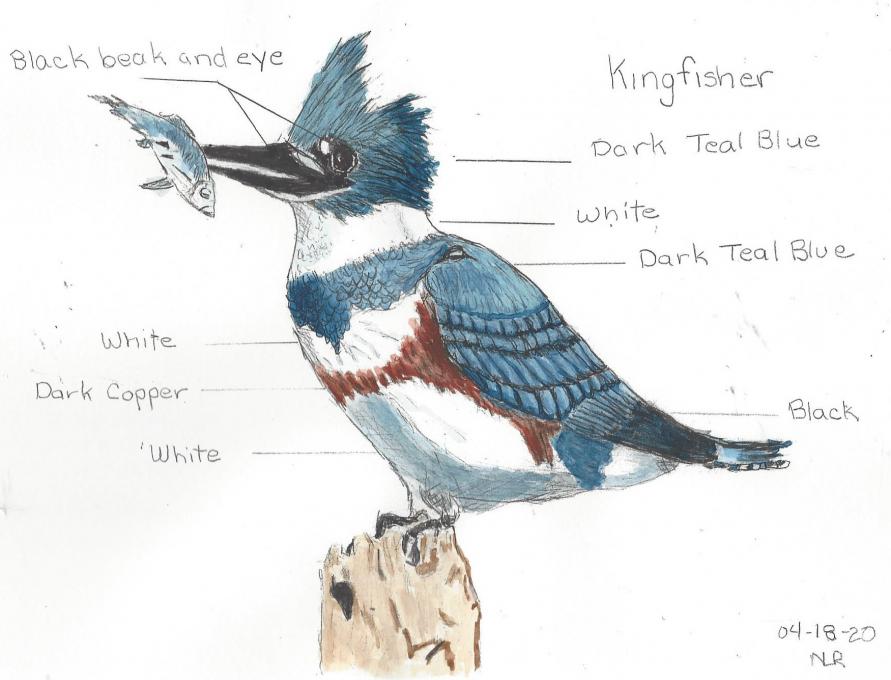
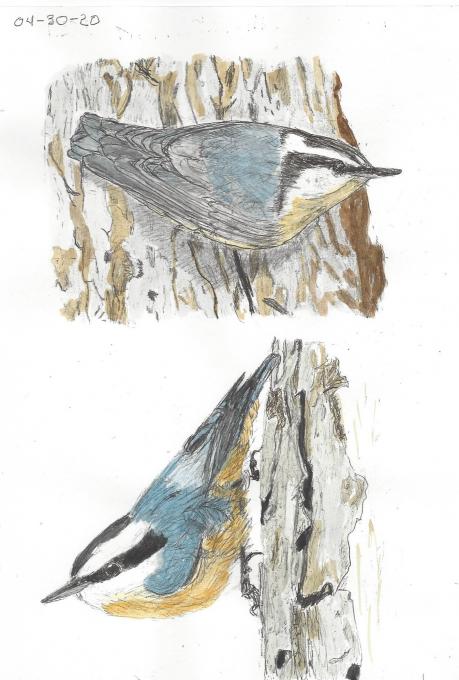
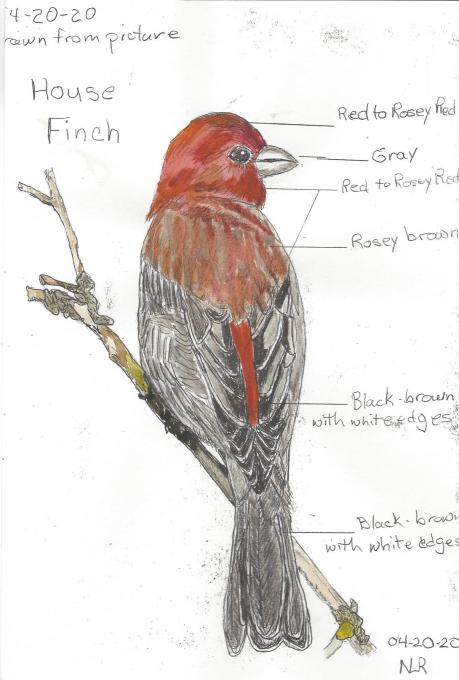
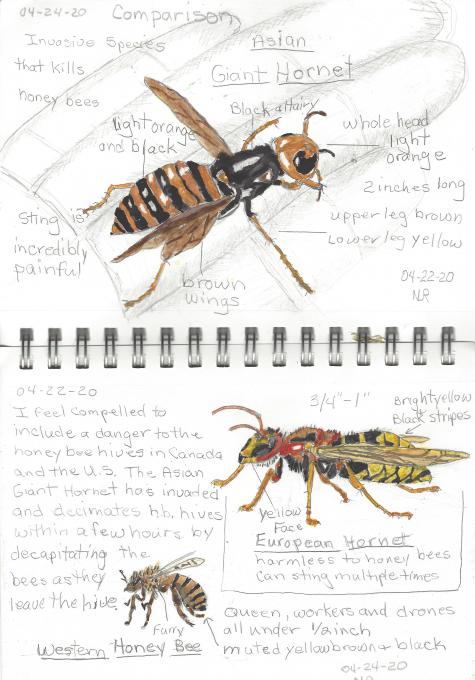
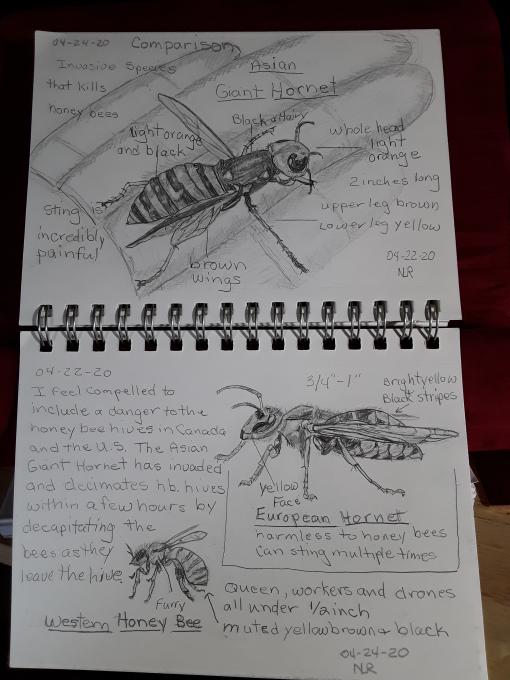
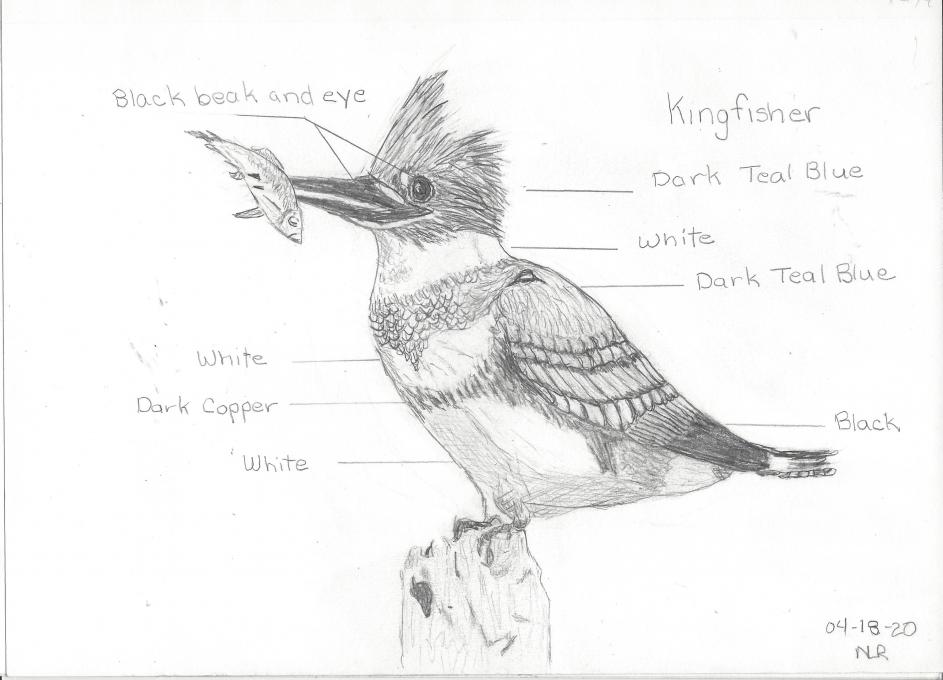
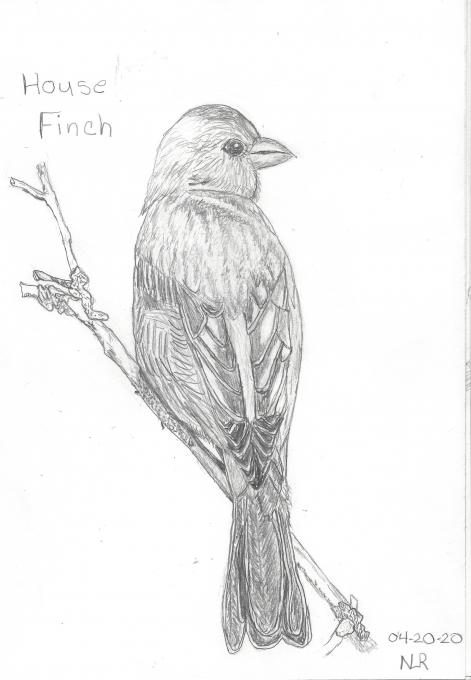 I have been working with pictures, trying to improve my skills. I think I am improving.
I have been working with pictures, trying to improve my skills. I think I am improving. 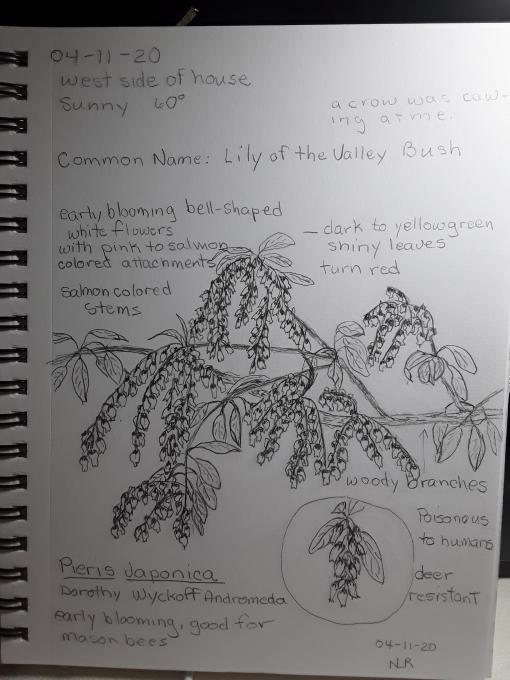


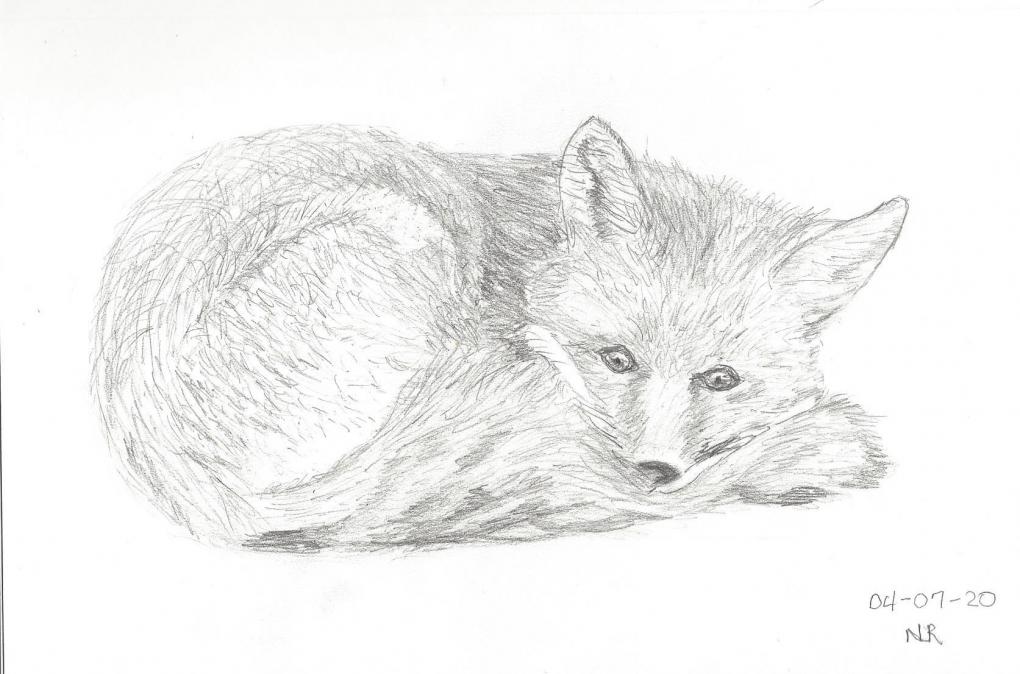 fruit.
fruit. 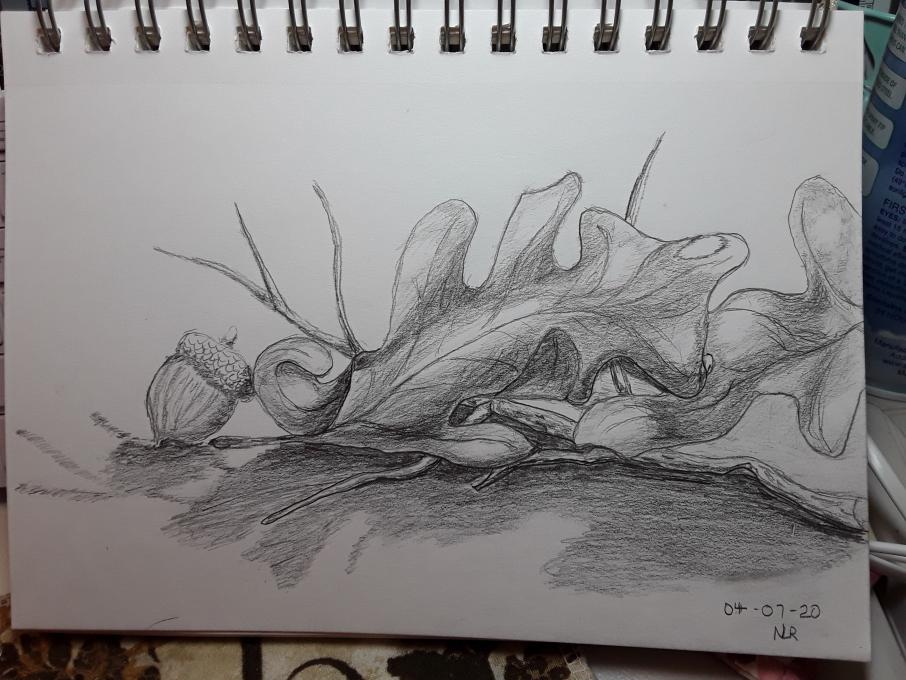
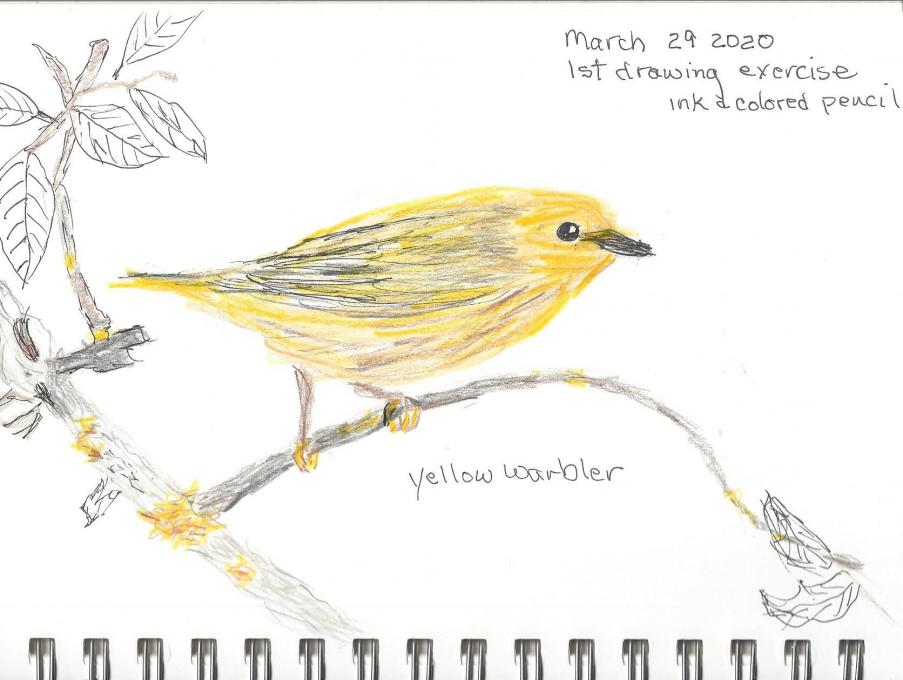 It was very difficult to get the shape just right. Oh and the beak is terrible. I hope I improve. I used some colored pencils but am looking forward to using water colors. More and more subtle colors are needed. I could see the details but just couldn't duplicate them. However, I have to say I liked the challenge.
It was very difficult to get the shape just right. Oh and the beak is terrible. I hope I improve. I used some colored pencils but am looking forward to using water colors. More and more subtle colors are needed. I could see the details but just couldn't duplicate them. However, I have to say I liked the challenge.